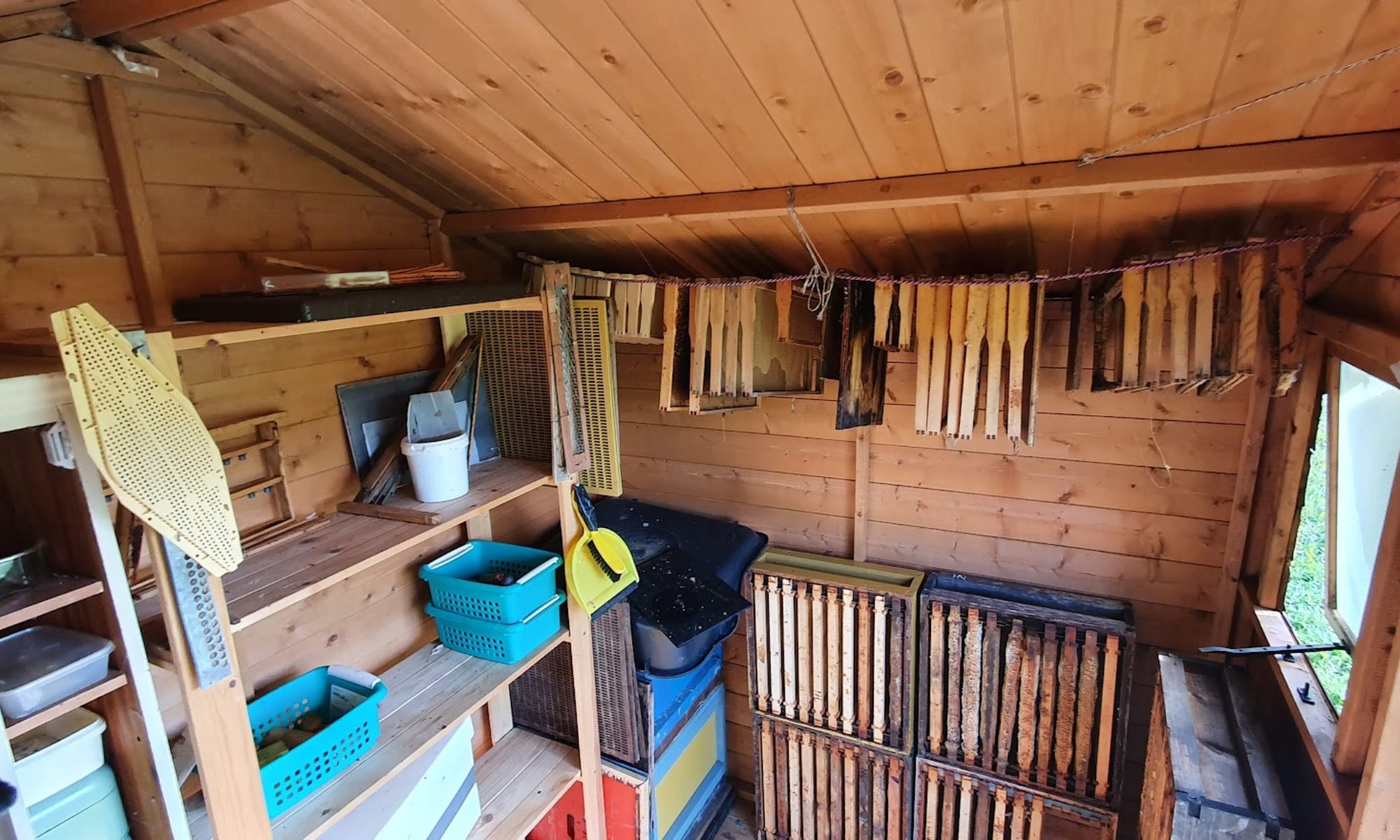Last year I made some beeswax polish. After a while I managed to sell it. People really liked it and asked for more. So this year, from my cappings wax haul, I decided I would make some more.
Beeswax Recipe 1.
Equal parts beeswax and turpentine
Method
- Liquefy the wax by heating – do this in a ban marie so it doesn’t overheat and keep away from naked flames.
- Pour the turpentine in – this is flammable too, so be careful. also keep the area well ventilated, the fumes are not good for you.
- Some of the beeswax with solidify, keep warming until its all liquid.
- Pour into tins, allow to cool & solidify, use as you wish
pro’s and cons
- This is simple to do
- The product is a hard wax, it requires hard work to apply it, but it gives a very good ‘hard’ finish on wood
- Turpentine gives good penetration into the wood for a long lasting effect
- Turpentine is expensive
- Turpentine is hard to find in the shops, usually replaced by turpentine substitute which wont do the job here.
- Turpentine is not nice stuff *
* Wikipedia says
“As an organic solvent, its vapour can irritate the skin and eyes, damage the lungs and respiratory system, as well as the central nervous system when inhaled, and cause renal failure when ingested, among other things. Being combustible, it also poses a fire hazard. Due to the fact that turpentine can cause spasms of the airways particularly in people with asthma and whooping cough, it can contribute to a worsening of breathing issues in persons with these diseases if inhaled.”
Beeswax Recipe 2.
As above but also add a 3rd equal part of raw linseed oil, added after the turpentine.
Pro’s and cons
- Makes for a softer compound and is easier to work.
- Apparently works very well treating leather to make it waterproof.
- Cheaper overall as less expensive than turpentine.
- Still contains pretty nasty turpentine
Last year I made some of recipe 1 and some of recipe 2. Recipe 2 sold better, being easier to work and I think looking more brown. This year I’ve made more of that recipe, and used up all the turpentine that I bought.
Now I have found an option which doesn’t use turpentine. The question is, will it work as well?
Beeswax Recipe 3.
- 1 part beeswax
- 3-4 parts olive oil (some say this is replaceable with coconut oil, jojoba oil, walnut oil, etc.)
- optional : Essential oils for scent (lavender, vanilla, sandalwood, etc)
Method
- put all together,
- warm
Pros and cons
- Less flammable issues
- Easier access to ingredients
- Much cheaper ingredients
- More natural product
- Less harmful chemical concerns in preparation and in final product usage (e.g. kids toys)
- Some concerns over oils going rancid, can be extended by fridge storage and/or Anti-oxidant such as clear Grapefruit Seed
- Extract or Vitamin E oil can be added. However these antioxidant essential oils are very expensive
Queries
- Will this recipe penetrate as well, so will the finish last as long as the turpentine recipes.
- Concerns over the product going rancid – a) shelf life an issue & b) after application is there still risk of it going rancid in situ?

I made a salve very similar to your recipe #3. beeswax, olive oil and essential oil. We have had some of it for 10 years [I made a lot…] and it is still just fine. Not rancid at all. Used lavender essential oil in it.
That’s good to know, thank you 🙂